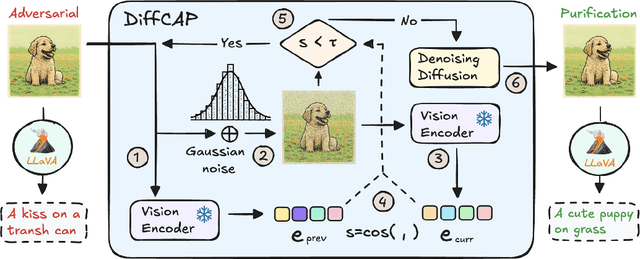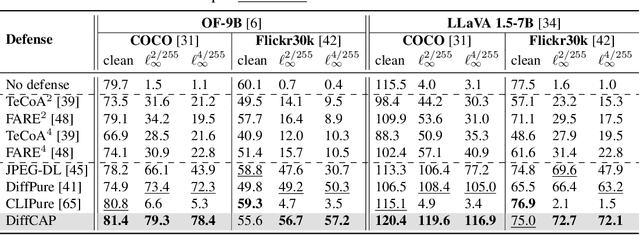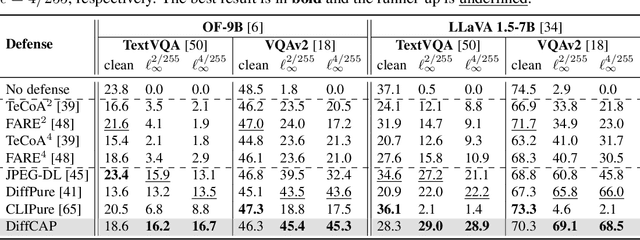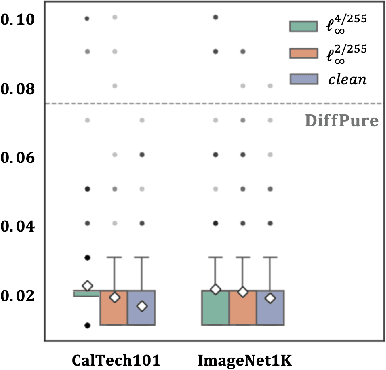Volkan Cevher
BLUR: A Bi-Level Optimization Approach for LLM Unlearning
Jun 09, 2025Abstract:Enabling large language models (LLMs) to unlearn knowledge and capabilities acquired during training has proven vital for ensuring compliance with data regulations and promoting ethical practices in generative AI. Although there are growing interests in developing various unlearning algorithms, it remains unclear how to best formulate the unlearning problem. The most popular formulation uses a weighted sum of forget and retain loss, but it often leads to performance degradation due to the inherent trade-off between forget and retain losses. In this work, we argue that it is important to model the hierarchical structure of the unlearning problem, where the forget problem (which \textit{unlearns} certain knowledge and/or capabilities) takes priority over the retain problem (which preserves model utility). This hierarchical structure naturally leads to a bi-level optimization formulation where the lower-level objective focuses on minimizing the forget loss, while the upper-level objective aims to maintain the model's utility. Based on this new formulation, we propose a novel algorithm, termed Bi-Level UnleaRning (\texttt{BLUR}), which not only possesses strong theoretical guarantees but more importantly, delivers superior performance. In particular, our extensive experiments demonstrate that \texttt{BLUR} consistently outperforms all the state-of-the-art algorithms across various unlearning tasks, models, and metrics. Codes are available at https://github.com/OptimAI-Lab/BLURLLMUnlearning.
Accelerating Spectral Clustering under Fairness Constraints
Jun 09, 2025Abstract:Fairness of decision-making algorithms is an increasingly important issue. In this paper, we focus on spectral clustering with group fairness constraints, where every demographic group is represented in each cluster proportionally as in the general population. We present a new efficient method for fair spectral clustering (Fair SC) by casting the Fair SC problem within the difference of convex functions (DC) framework. To this end, we introduce a novel variable augmentation strategy and employ an alternating direction method of multipliers type of algorithm adapted to DC problems. We show that each associated subproblem can be solved efficiently, resulting in higher computational efficiency compared to prior work, which required a computationally expensive eigendecomposition. Numerical experiments demonstrate the effectiveness of our approach on both synthetic and real-world benchmarks, showing significant speedups in computation time over prior art, especially as the problem size grows. This work thus represents a considerable step forward towards the adoption of fair clustering in real-world applications.
DiffCAP: Diffusion-based Cumulative Adversarial Purification for Vision Language Models
Jun 04, 2025



Abstract:Vision Language Models (VLMs) have shown remarkable capabilities in multimodal understanding, yet their susceptibility to perturbations poses a significant threat to their reliability in real-world applications. Despite often being imperceptible to humans, these perturbations can drastically alter model outputs, leading to erroneous interpretations and decisions. This paper introduces DiffCAP, a novel diffusion-based purification strategy that can effectively neutralize adversarial corruptions in VLMs. We observe that adding minimal noise to an adversarially corrupted image significantly alters its latent embedding with respect to VLMs. Building on this insight, DiffCAP cumulatively injects random Gaussian noise into adversarially perturbed input data. This process continues until the embeddings of two consecutive noisy images reach a predefined similarity threshold, indicating a potential approach to neutralize the adversarial effect. Subsequently, a pretrained diffusion model is employed to denoise the stabilized image, recovering a clean representation suitable for the VLMs to produce an output. Through extensive experiments across six datasets with three VLMs under varying attack strengths in three task scenarios, we show that DiffCAP consistently outperforms existing defense techniques by a substantial margin. Notably, DiffCAP significantly reduces both hyperparameter tuning complexity and the required diffusion time, thereby accelerating the denoising process. Equipped with strong theoretical and empirical support, DiffCAP provides a robust and practical solution for securely deploying VLMs in adversarial environments.
Chameleon: A Flexible Data-mixing Framework for Language Model Pretraining and Finetuning
May 30, 2025Abstract:Training data mixtures greatly impact the generalization performance of large language models. Existing domain reweighting methods often rely on costly weight computations and require retraining when new data is introduced. To this end, we introduce a flexible and efficient data mixing framework, Chameleon, that employs leverage scores to quantify domain importance within a learned embedding space. We first construct a domain affinity matrix over domain embeddings. The induced leverage scores determine a mixture that upweights domains sharing common representations in embedding space. This formulation allows direct transfer to new data by computing the new domain embeddings. In experiments, we demonstrate improvements over three key scenarios: (i) our computed weights improve performance on pretraining domains with a fraction of the compute of existing methods; (ii) Chameleon can adapt to data changes without proxy retraining, boosting few-shot reasoning accuracies when transferred to new data; (iii) our method enables efficient domain reweighting in finetuning, consistently improving test perplexity on all finetuning domains over uniform mixture. Our code is available at https://github.com/LIONS-EPFL/Chameleon.
Efficient Large Language Model Inference with Neural Block Linearization
May 27, 2025Abstract:The high inference demands of transformer-based Large Language Models (LLMs) pose substantial challenges in their deployment. To this end, we introduce Neural Block Linearization (NBL), a novel framework for accelerating transformer model inference by replacing self-attention layers with linear approximations derived from Linear Minimum Mean Squared Error estimators. NBL leverages Canonical Correlation Analysis to compute a theoretical upper bound on the approximation error. Then, we use this bound as a criterion for substitution, selecting the LLM layers with the lowest linearization error. NBL can be efficiently applied to pre-trained LLMs without the need for fine-tuning. In experiments, NBL achieves notable computational speed-ups while preserving competitive accuracy on multiple reasoning benchmarks. For instance, applying NBL to 12 self-attention layers in DeepSeek-R1-Distill-Llama-8B increases the inference speed by 32% with less than 1% accuracy trade-off, making it a flexible and promising solution to improve the inference efficiency of LLMs.
Continuous-Time Analysis of Heavy Ball Momentum in Min-Max Games
May 26, 2025Abstract:Since Polyak's pioneering work, heavy ball (HB) momentum has been widely studied in minimization. However, its role in min-max games remains largely unexplored. As a key component of practical min-max algorithms like Adam, this gap limits their effectiveness. In this paper, we present a continuous-time analysis for HB with simultaneous and alternating update schemes in min-max games. Locally, we prove smaller momentum enhances algorithmic stability by enabling local convergence across a wider range of step sizes, with alternating updates generally converging faster. Globally, we study the implicit regularization of HB, and find smaller momentum guides algorithms trajectories towards shallower slope regions of the loss landscapes, with alternating updates amplifying this effect. Surprisingly, all these phenomena differ from those observed in minimization, where larger momentum yields similar effects. Our results reveal fundamental differences between HB in min-max games and minimization, and numerical experiments further validate our theoretical results.
ESLM: Risk-Averse Selective Language Modeling for Efficient Pretraining
May 26, 2025Abstract:Large language model pretraining is compute-intensive, yet many tokens contribute marginally to learning, resulting in inefficiency. We introduce Efficient Selective Language Modeling (ESLM), a risk-aware algorithm that improves training efficiency and distributional robustness by performing online token-level batch selection. ESLM leverages per-token statistics (e.g., entropy or loss) and applies value-at-risk thresholding to retain only the most informative tokens per batch. This data-centric mechanism reshapes the training loss, prioritizing high-risk tokens and eliminating redundant gradient computation. We frame ESLM as a bilevel game: the model competes with a masking adversary that selects worst-case token subsets under a constrained thresholding rule. In the loss-based setting, ESLM recovers conditional value-at-risk loss minimization, providing a principled connection to distributionally robust optimization. We extend our approach to Ada-ESLM, which adaptively tunes the selection confidence during training. Experiments on GPT-2 pretraining show that ESLM significantly reduces training FLOPs while maintaining or improving both perplexity and downstream performance compared to baselines. Our approach also scales across model sizes, pretraining corpora, and integrates naturally with knowledge distillation.
Learning Equilibria from Data: Provably Efficient Multi-Agent Imitation Learning
May 23, 2025Abstract:This paper provides the first expert sample complexity characterization for learning a Nash equilibrium from expert data in Markov Games. We show that a new quantity named the single policy deviation concentrability coefficient is unavoidable in the non-interactive imitation learning setting, and we provide an upper bound for behavioral cloning (BC) featuring such coefficient. BC exhibits substantial regret in games with high concentrability coefficient, leading us to utilize expert queries to develop and introduce two novel solution algorithms: MAIL-BRO and MURMAIL. The former employs a best response oracle and learns an $\varepsilon$-Nash equilibrium with $\mathcal{O}(\varepsilon^{-4})$ expert and oracle queries. The latter bypasses completely the best response oracle at the cost of a worse expert query complexity of order $\mathcal{O}(\varepsilon^{-8})$. Finally, we provide numerical evidence, confirming our theoretical findings.
Layer-wise Quantization for Quantized Optimistic Dual Averaging
May 20, 2025Abstract:Modern deep neural networks exhibit heterogeneity across numerous layers of various types such as residuals, multi-head attention, etc., due to varying structures (dimensions, activation functions, etc.), distinct representation characteristics, which impact predictions. We develop a general layer-wise quantization framework with tight variance and code-length bounds, adapting to the heterogeneities over the course of training. We then apply a new layer-wise quantization technique within distributed variational inequalities (VIs), proposing a novel Quantized Optimistic Dual Averaging (QODA) algorithm with adaptive learning rates, which achieves competitive convergence rates for monotone VIs. We empirically show that QODA achieves up to a $150\%$ speedup over the baselines in end-to-end training time for training Wasserstein GAN on $12+$ GPUs.
Hadamard product in deep learning: Introduction, Advances and Challenges
Apr 17, 2025Abstract:While convolution and self-attention mechanisms have dominated architectural design in deep learning, this survey examines a fundamental yet understudied primitive: the Hadamard product. Despite its widespread implementation across various applications, the Hadamard product has not been systematically analyzed as a core architectural primitive. We present the first comprehensive taxonomy of its applications in deep learning, identifying four principal domains: higher-order correlation, multimodal data fusion, dynamic representation modulation, and efficient pairwise operations. The Hadamard product's ability to model nonlinear interactions with linear computational complexity makes it particularly valuable for resource-constrained deployments and edge computing scenarios. We demonstrate its natural applicability in multimodal fusion tasks, such as visual question answering, and its effectiveness in representation masking for applications including image inpainting and pruning. This systematic review not only consolidates existing knowledge about the Hadamard product's role in deep learning architectures but also establishes a foundation for future architectural innovations. Our analysis reveals the Hadamard product as a versatile primitive that offers compelling trade-offs between computational efficiency and representational power, positioning it as a crucial component in the deep learning toolkit.
 Add to Chrome
Add to Chrome Add to Firefox
Add to Firefox Add to Edge
Add to Edge